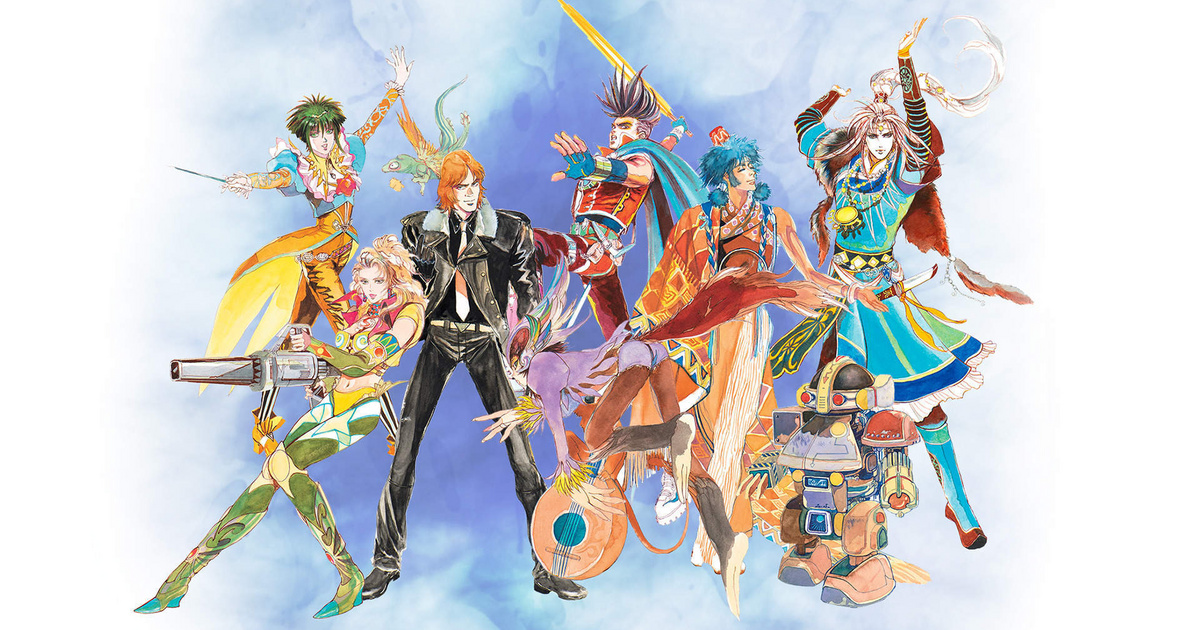SaGa Frontier originally appeared in Japan in 1997 for the PS1 and then for a year in the United States, but has not been shown in Europe. We also diced the SaGa Frontier Remastered as a true “green-eared SaGa,” which in many ways is still a great piece. We picked up the nostalgic glasses and cut curls on the classic piece on the PlayStation 4 Pro.
Armed with HD graphics, additional amenities compared to the 24-year-old, and additional story threads, we received Episode Seven of the SaGa franchise. Although the improvements likely targeted a wider audience than usual in the series so far, the question arises: Who really is SaGa Frontier Remastered?
Final Fantasy Combat
Although successful in Japan, the SaGa franchise, little known in other parts of the world, has always evolved in the shadow of Final Fantasy. SaGa games, also made by Square Enix, were born from the imagination of game designer Akitoshi Kawazu, who actually worked on the first two episodes of Final Fantasy.
To mark the launch of the Nintendo Game Boy
Square decided to develop a separate RPG for the console.
Designing an RPG more powerful than Final Fantasy, Kawazu and his team got started and released the Makai Toushi SaGa in 1989, known in Europe as The Final Fantasy Legend – the first SaGa game. However, despite the fact that both role-playing franchises were released by the same company, the two series didn’t show much similarity. So much so, that SaGa is often referred to as “Fight Final Fantasy”.
After 24 years
SaGat has always been distinguished by providing non-linear adventures in which the world can be fully explored from the start, and the missions can be completed in the required order, or even half, in addition to controlling characters who all have their own personalities, a unique story. From the start, the series has always offered short tales that are somewhat interconnected, not as big an epic adventure as Final Fantasy.
Of course, all of these game elements can also be found in SaGa Frontier, which came to us in the Remastered version 24 years after it was launched on PlayStation 1 in Japan. Since there are a lot of dialogues in the game and it is not translated into Hungarian, it requires good knowledge of the English language, that is
I also love nostalgic retro titles,
Because despite the high-resolution graphics, even the old visual style dominates them despite the crease of the stitching.
SaGa Frontier Remastered (Forrás: Square Enix)
Many kinds of universes in one game
Also in this episode, we find the series’ defining elements: SaGa Frontier follows the story of seven different characters who live in a solar system called Zones. Thanks to a universe that combines science fiction and fantasy, the developers present a world in which different smaller worlds exist together, which we seldom see together, but in this game they are still connected in a completely unique way.
Among other things, we can visit the mysterious world of Facinaturu, among the futuristic buildings in Manhattan, but we can meet the new black atmosphere on the streets of Koorong as well as many worlds of magic. SaGa Frontier offers an array of planets and locations to be explored by the player, which are depicted in radically different visual representations, so there is no shortage of diversity in this area. This high-resolution graphic crimp stitching is important not only for the needs of the modern day operator, but also for better transparency and readability of menus and texts.

SaGa Frontier Remastered (Forrás: Square Enix)
Freedom, I love you
In addition to the colorful universe, another great strength of SaGa Frontier is the freedom of players. In every scenario, we are free to explore about ten worlds. Additionally, we can recruit new members from about twenty playable characters to complete side quests that can lead to much better items and new, stronger spells, or explore smaller cave systems from side quests. While the game doesn’t chew this into our mouths, it does encourage us to discover as much of our vast universe as possible.
However, this tremendous freedom also has its drawbacks. Anyone unfamiliar with the series and accustomed to the more story-focused and epic Japanese role-playing games such as Dragon Quest or the Final Fantasy franchises can be specifically confused by the tremendous freedom, complex development, and mission systems with plenty of possibilities. So it’s very hard to reach a stage in the game at all when we can actually discover its strengths, although today’s players may be interested in what this franchise would have done had it become more popular and included a wider fanbase. More could develop.
So this game is definitely for “specialist” JRPG fans who, in addition to or instead of the aforementioned two mainstream series, want some unique forgotten specialization, but there is a possibility to share them with a scene that can be considered outdated despite the HD graphics.












































